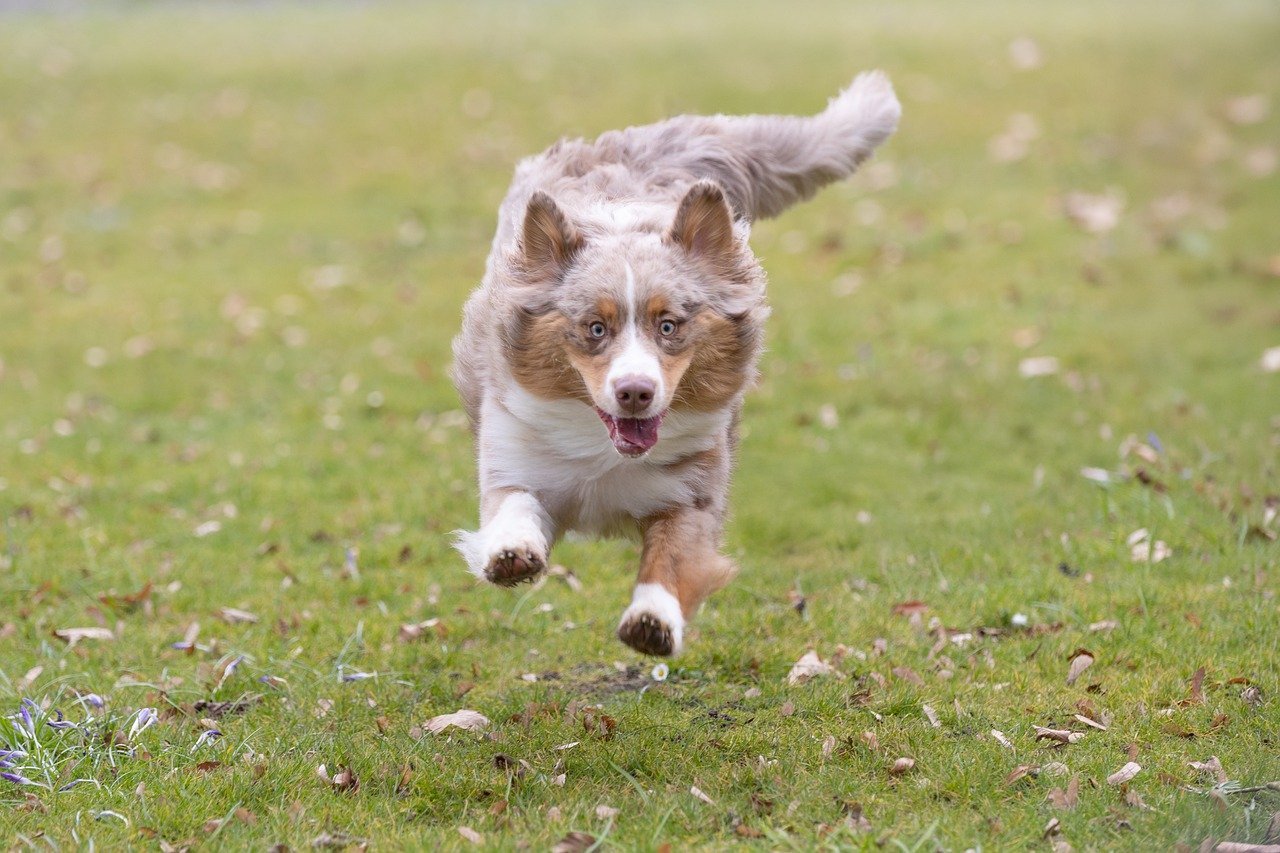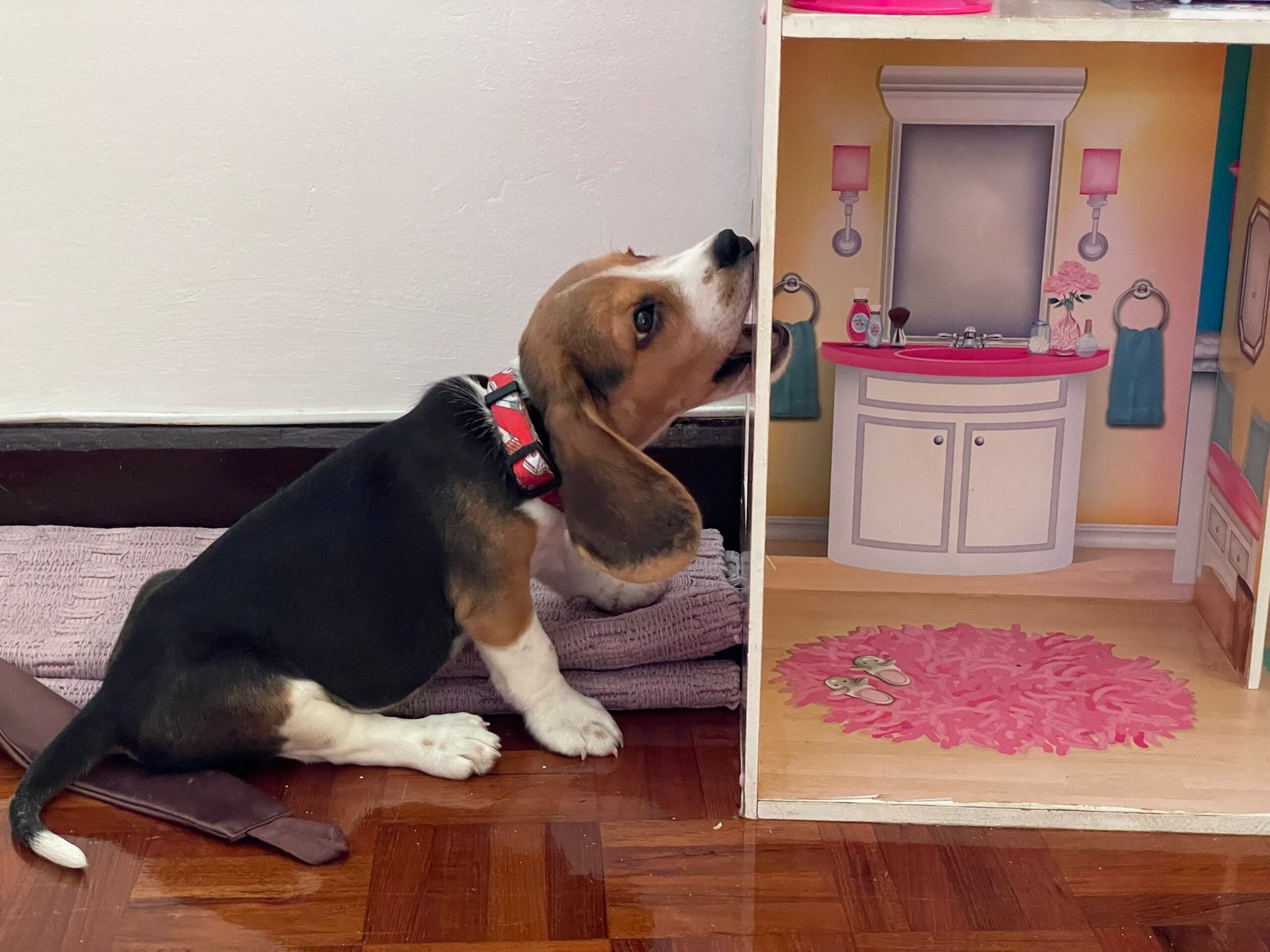Ever caught your dog giving you the side-eye when you pick up your keys? Or seen them sulk when you eat without sharing? It’s not just your imagination—dogs have moods, and they’re not shy about showing them. These lovable creatures are emotional powerhouses, wearing their hearts on their furry sleeves. Get ready to explore the fascinating world of canine moods, where every tail wag, deep sigh, or quirky zoomie tells a story. If you’ve ever wondered whether your dog is happy, grumpy, jealous, or just plain silly, read on for 20 unmistakable signs that our best friends are far more emotionally complex than we give them credit for.
The Legendary Tail Wag: Not Always Happy
Anyone who’s spent time with dogs knows they’re more than just loyal companions—they’re expressive, emotional beings with moods that shift just like ours. From playful zoomies to sulky stares and everything in between, dogs communicate their feelings through a wide range of quirky behaviors. These moments aren’t just amusing—they offer real insight into your dog’s emotional world.
Most people think a wagging tail means a happy pup, but it’s not always so simple. Dogs use their tails like emotional flags, signaling everything from excitement to anxiety. A fast, wide wag usually means joy, especially if their whole rear end wiggles. But a slow, stiff wag can mean uncertainty or even warning. Sometimes, a wag to the right shows friendliness, while a wag to the left can mean nervousness. When you walk in after a long day and your dog’s tail is a blur, you know you’re loved. But next time that tail is low and twitchy, your dog might just be feeling uneasy.
The Classic Puppy Eyes: Masters of Manipulation

Dogs have perfected the art of the “puppy eyes”—that soulful, pleading stare meant to melt your heart. This look isn’t just about begging for treats; it’s a genuine display of emotion. When your pup wants comfort, is feeling sad, or simply craves attention, those big, round eyes come out in full force. Scientists have even found that dogs evolved to use this expression on humans, strengthening the bond between us. Next time your dog gazes up at you after a scolding, don’t be surprised if you feel a pang of guilt—they know exactly what they’re doing!
Zoomies: The Ultimate Joy Explosion

Every dog owner has witnessed it—the sudden, wild dashes around the house or yard, legs flying, tongue out, pure chaos. These “zoomies” are officially called Frenetic Random Activity Periods (FRAPs), and they’re a hilarious sign of happiness and excitement. Dogs often get zoomies after a bath, during playtime, or when they’re just plain thrilled about life. It’s like watching a furry lightning bolt, and it’s impossible not to laugh. Zoomies remind us that sometimes, joy is just too big to keep inside.
The Dramatic Sigh: Canine Sorrow or Contentment?

If you’ve ever heard your dog give a deep, theatrical sigh, you’re not alone. This sound is usually a sign of contentment—like settling in for a cozy nap after a long walk. But sometimes, it’s also a little doggy drama. If they sigh while looking at you, they might be expressing disappointment or mild frustration, especially if their favorite toy is just out of reach. Think of it as your dog’s way of saying, “Oh, life is so hard… unless you get me that treat.”
Head Tilting: Curiosity and Connection
That adorable, slightly confused head tilt is one of the cutest canine quirks. Dogs tilt their heads when they hear an interesting sound or try to understand what you’re saying. But it’s more than just curiosity—tilting their head helps them hear better and read your facial expressions. Some experts think it’s also a sign your dog is trying to connect with you emotionally. The next time your pup cocks their head at your voice, know they’re really listening—and they care.
Excessive Licking: Affection or Anxiety?

Dogs lick for lots of reasons, and it’s not just about grooming. Licking your hand, face, or even your feet can be a sign of affection—like giving you a gentle kiss. But if your dog starts licking themselves or objects obsessively, it could be a sign of stress or anxiety. Sometimes, licking is a way for dogs to self-soothe when they’re feeling overwhelmed. Watch for changes in licking patterns; your dog might be telling you they need some extra comfort.
Play Bowing: Let’s Have Fun!
One of the most joyful sights in the dog world is the play bow—front legs stretched out, rear end in the air, tail wagging. This universal signal means “let’s play!” and is an open invitation for fun. Dogs use play bows with humans and other dogs to show excitement and happiness. If your dog bows and bounces, they’re probably in a fantastic mood and eager to romp. It’s a simple gesture, but it speaks volumes about their playful spirit.
Hiding or Retreating: Feeling Vulnerable
Sometimes, dogs just want to be alone. If your pup hides under a bed or retreats to a quiet corner, it’s often a sign they’re feeling scared, overwhelmed, or unwell. Loud noises, strangers, or changes in the environment can trigger this behavior. While it’s normal for dogs to seek solitude occasionally, frequent hiding may mean your dog is anxious or not feeling their best. Respect their need for space and offer gentle reassurance when they’re ready.
Growling and Grumbling: More Than Just Anger
Growling is often misunderstood as pure aggression, but dogs growl for many reasons. It can be a warning or a request for space, but it can also be a playful sound during roughhousing. Some dogs even grumble when they’re happy, like a low, contented “talking.” Pay attention to the context—watch their body language, tail, and ears. Growling is one way dogs communicate their boundaries or emotional state, so don’t ignore it.
Yawning: Tired, Stressed, or Just Being Social?
Yawning isn’t always about being sleepy. Dogs yawn to calm themselves when they’re anxious or to diffuse tension in a stressful situation. If you yawn and your dog yawns back, it’s a sign of empathy and social bonding. Yawning can also help dogs relax or signal they’re uncomfortable with something happening around them. The next time your dog yawns at the vet, it could mean they’re nervous, not bored.
Leaning Against You: Seeking Comfort
When your dog leans their whole weight against your leg or side, it’s a sign they trust you completely. Leaning is a way for dogs to seek comfort and reassurance, especially in stressful situations. It’s their equivalent of a hug—a physical way of saying, “I feel safe with you.” If your dog leans in during thunderstorms or crowded places, they’re looking to you for security. Enjoy that closeness; it means you’re their safe haven.
Howling: Echoes of the Wild and Emotional Release
Dogs howl for many reasons, and it can sound haunting, hilarious, or both. Sometimes, a siren or a musical instrument sets them off, but howling also happens when dogs feel lonely or want attention. It’s a throwback to their wolf ancestors, a way to “call the pack.” If your dog howls when you leave, it might be separation anxiety. Howling is a deeply emotional expression, and it’s their way of saying, “Hey, I’m here—don’t forget about me!”
Rolling Over: Submission or Playfulness?

When a dog rolls onto their back, belly up, it can mean several things. Sometimes, it’s a signal of submission, saying, “I trust you” or “I’m not a threat.” Other times, it’s an invitation to play or a request for belly rubs. If your dog rolls over during playtime, they’re showing they feel safe and happy. But if they do it when meeting a new dog or person, it’s likely a sign of trust mixed with a little nervousness.
Pacing: Restless or Anxious Energy
Pacing is a sure sign that your dog’s mood is unsettled. Dogs pace back and forth when they’re anxious, excited, or waiting for something important—like dinner! It’s a physical way for them to burn off nervous energy. If your dog paces before you leave or during storms, they might need extra comfort. Regular pacing can signal underlying stress, so pay attention to when and why it happens.
Barking: Emotion in Every Note

Barking is one of the most obvious ways dogs express themselves, but it’s far from simple noise. A sharp, excited bark can mean happiness or a call to play, while a deep, growly bark signals warning or fear. Some dogs even “talk” with their barks, using different pitches and rhythms to communicate. If your dog barks when you come home, it’s probably pure joy. But persistent barking may mean they’re bored, anxious, or trying to tell you something important.
Refusing Food: Mood Swings in Action
A dog who suddenly turns up their nose at food is making a strong emotional statement. Refusing meals can mean your dog is stressed, sad, or even upset with a change in their routine. Some dogs go on “hunger strikes” after moving house or when their favorite person is away. While it’s important to check for illness, mood changes often play a big part in appetite. When your dog won’t eat, tune into what might be troubling them emotionally.
Snuggling Closer: Warmth and Love
There’s nothing better than a dog who snuggles up close—on your lap, beside you on the couch, or curled at your feet. This behavior is a sign of deep affection and trust. Dogs crave warmth and comfort, and snuggling helps them feel safe and loved. If your dog seeks you out during storms or stressful times, they’re using your presence to soothe their worries. Cherish these moments; your dog’s cuddle is a gift of pure love.
Chewing Everything: Boredom or Frustration

Chewing on shoes, furniture, or random objects is a classic sign of canine moodiness—usually boredom or frustration. Dogs need mental and physical stimulation, and when they don’t get enough, they find their own entertainment. Chewing can also be a way to relieve stress or anxiety, especially for puppies or high-energy breeds. If your dog suddenly becomes a destroyer, it might be time for more play, walks, or puzzle toys.
Ignoring You: The Silent Treatment
Ever had your dog give you the cold shoulder? Ignoring you, turning away, or refusing to respond can be their way of expressing displeasure or hurt feelings. Maybe you left them alone too long or skipped their walk. Dogs are sensitive creatures, and sometimes they need to show you they’re not happy. It’s the canine version of “I can’t believe you did that!” Don’t worry—lots of love and a treat or two usually win them back.
Sleeping Positions: Mood on Display
How a dog sleeps can reveal a lot about their mood. Curled up tight might mean they’re feeling cautious, while sprawled out on their back shows total relaxation and trust. Some dogs sleep with a paw over their face, a sign they’re comfortable and cozy. Others prefer leaning against you, seeking warmth and security. Watching your dog sleep is like reading a diary—each position tells a story about their feelings in that moment.
Dogs may not speak our language, but their quirky behaviors speak volumes about how they’re feeling. From happy tail wags to moody huffs, each action is a glimpse into your dog’s emotional state—and a reminder that they experience a wide range of moods just like we do. By paying attention to these subtle (and sometimes not-so-subtle) cues, you can strengthen your bond, respond more thoughtfully to their needs, and build a deeper, more compassionate relationship. After all, truly understanding your dog means recognizing that behind every quirk is a feeling waiting to be heard.





